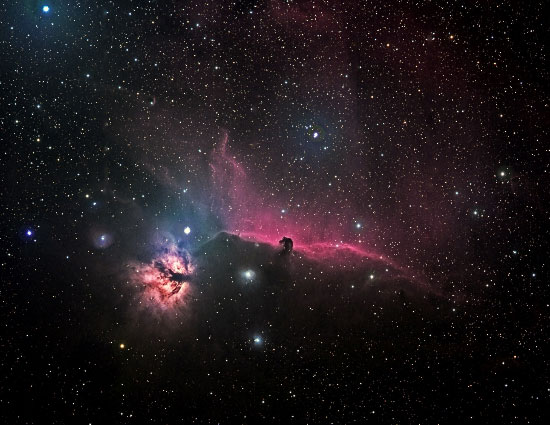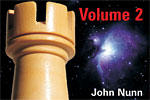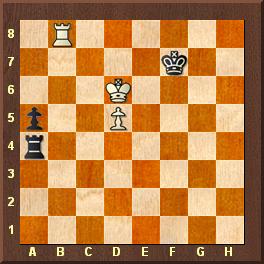 The
Beauty of Rook Endings
The
Beauty of Rook Endings
GM Dr. Karsten Müller reviews Nunn’s
Chess Endings,
Volume 2 (Gambit Publications 2010)
Why study the endgame and why rook endings, I hear you ask? In my opinion,
it is very important nowadays for several reasons. Quickplay finishes place
special demands on endgame knowledge and in order not to be lost at sea without
a light to steer by you should know both the guidelines and concrete examples
of endgames likely to arise in practical play. Moreover, as John Nunn strongly
emphasizes, endgame training provides good practice in calculating concrete
variations in your head. There are fewer pieces on the board, and the options
available are more limited, so you can more easily learn the individual abilities
of the pieces, which will also help your opening and middlegame play. As important
psychological point is that with greater knowledge, you need not be afraid to
enter endgames but can instead look forward to reaching them.
Rook endings occur very frequently, so Nunn’s work comes in handy at
this point. John Nunn is ideally qualified as an author due to his vast experience
in the field (I can also recommend his recent Understanding
Chess Endgames, in which he explains 100 key concepts of endgame play,
to get started in this rich subject). In this second volume Nunn covers endings
with just rooks and endings with rooks and minor pieces.
The current work has not only been very thoroughly computer checked, correcting
many mistakes in published analysis, but all important points are richly explained
in words. The second volume of Nunn’s Chess Endings extends endgame
knowledge in various ways. For example, he explains that the drawing margin
in endings with rook and two pawns vs rook is much larger than most previous
works claim; Nunn explains this in a very concrete and detailed way, which will
help you to save valuable half-points from time to time. He also looks at many
themes from a different angle or introduces new terms to help you remember the
important key points, such as Hesitation Checks, Common Error: Checking Distance,
Promoting Too Soon, Common Error: Rook Behind Passed Pawn. But is following
Dr Tarrasch’s well-known old rule about rooks behind passed pawns really
considered an error nowadays? Of course not, and in many cases it is still valid,
but following it too automatically can easily lead to mistakes, as in the following
example given by Nunn.
Knobel,Rolf - Neumann,Joachim [B36]
olm12 fin B1 corr9598 ICCF corr, 1998 [Nunn,John]
Here is how Nunn explains it:
One curious psychological feature of rook endings is that players are often
overcome by the desire to put their rook behind the enemy passed pawn, even
if this is totally inappropriate. Doubtless many generations of textbooks emphasising
this point have served to ingrain the reflex into the subconscious of many players,
often with unfortunate consequences. Here’s an example. Without Black’s
a-pawn this position would be an easy win for White, since Black’s king
is on the long side of the pawn, and Black’s checking distance from the
a-file is too short to trouble White. The addition of the a-pawn makes almost
no difference to the situation, other than to interfere with Black's checking
possibilities.
1 Ra8? This is one of the odd moves resulting from the ‘rook
behind enemy passed pawn’ reflex. Black’s a-pawn is as yet no danger
and White certainly had no need to try to restrain it at this stage. In some
lines White should attack the black pawn from the side rather than from behind,
and so it is best to leave the rook where it is for the moment, since this leaves
both options open. 1 Kd7! was the simplest win and after 1...Ra1 (or 1...Rb4
2 Ra8 and White wins comfortably after 2 ..a4 3 d6 or 2...Rb7+ 3 Kc6 Rb1 4 Rxa5)
2 d6 a4 3 Rc8 (3 Rb4 is also good) 3...a3 4 Rc3! (the only move to win, but
one which is fairly obvious if you are aware of the rook-switch concept) 4...a2
5 Rc2 Kf6 6 Kc7 Ke6 7 d7 Rd1 8 Re2+ Kf6 9 Rxa2 the d-pawn will promote.
1...Rd4! This position is a draw even without the a-pawn.
2 Rxa5. 2 Kc6 Ke7 and 2 Rd8 a4 are also simple draws. 2...Ke8
½-½. Black draws after 3 Ra8+ Kf7 4 Rd8 Ra4! 5 Kc7 (5
Kc6 Ke7 6 Rd7+ Ke8 7 Rh7 Ra6+ is also drawn) 5...Ra7+ 6 Kb6 Ke7. [Click
to replay]
This example shows that knowing the guidelines is not enough. You should develop
a feel for the exceptions to the general rules and this can only be done by
looking at many concrete examples. There is nothing more helpful here than such
an excellent collection as Nunn provides.
If there are points of criticism I would say that Nunn should have included
exercises and more material on the practically very important ending with rook
and minor piece vs rook and minor piece, which are underrepresented in the endgame
literature in general. Altogether I can say that John Nunn has added another
impressive work to his rich collection and I strongly recommend you to study
it.
Apart from actually writing some of the Gambit Publication books, John Nunn
has been typesetting most of them, and for about six years now, with the advent
of good digital cameras, designing the covers – at a fraction of the price,
we might add, of the previous cost of a professional photographer with an assistant
working in a studio and with chemical emulsions. And the new cover design is
a clear improvement over earlier volumes.
As could be expected John's covers are now moving into space and the universe.
Chess Endings Vol. 2 shows a rook lit by a remote flash in front of the Orion
Nebula M42 – very inspirational for students trying to grasp the universal
laws of chess endgames. We can expect more of this theme from the astronomy
fan who is now using remote telescopes all over the world to produce stunning
images of our galaxy. Here are some of his latest.

NGC 6992, known as the Eastern
Veil Nebula, part of the remnants of a supernova that exploded some 5,000
to 8,000 years ago. It was probably familiar to human observers, and when it
detonated it was visible in broad daylight. The remnants were discovered in
1784 by William Herschel.

The spiral galaxy M74, the an archetypal example of a Grand
Design Spiral Galaxy (no religious connotations here). There are a number
of faint galaxies in John's original image, but at magnitude 17-19 they do not
turn up so clearly in our reduced version. There is a more spectacular image
of M74 the Hubble
site, but John has not been able to gain remote access to that instrument.

The Horsehead Nebula is part of the much larger Orion Molecular Cloud Complex,
which was used on the cover of Nunn's Chess Endings Vol. 2. It is approximately
1500 light years from Earth. It is one of the most identifiable nebulae because
of the shape of its swirling cloud of dark dust and gases, which is similar
to that of a horse's head when viewed from Earth. The above image was recorded
by members of the Rent-a-Scope community (see links below).
On September 6th, 2010, Dr Marleen Bryan interviewed Dr Christian Sasse
and Dr John Nunn. The interview discussed some interesting concepts and similarities
between astronomy and the game of chess. For those who missed the webcast it
is archived here:

Links


















 The
Beauty of Rook Endings
The
Beauty of Rook Endings 








